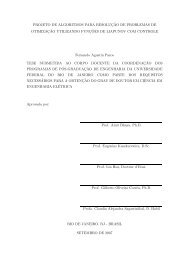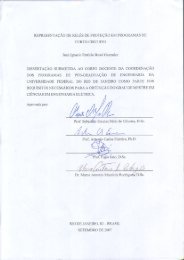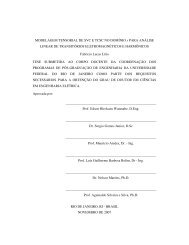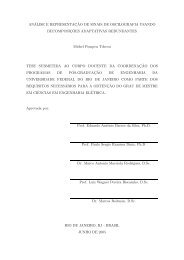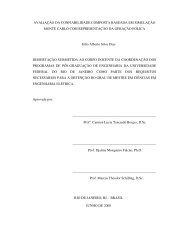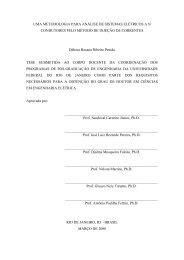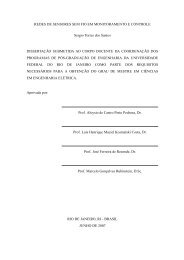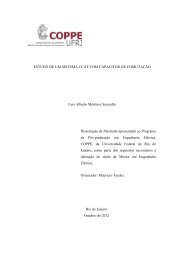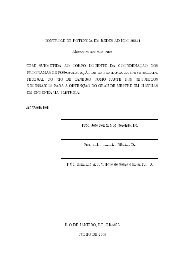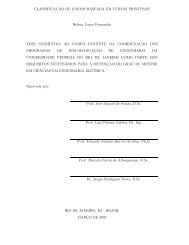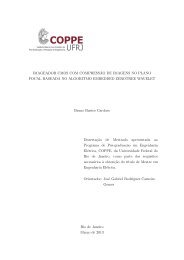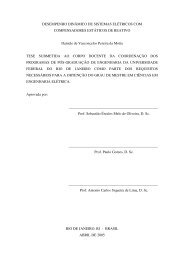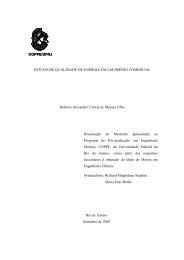v - Programa de Engenharia Elétrica - UFRJ
v - Programa de Engenharia Elétrica - UFRJ
v - Programa de Engenharia Elétrica - UFRJ
Create successful ePaper yourself
Turn your PDF publications into a flip-book with our unique Google optimized e-Paper software.
Abstract of Dissertation presented to COPPE/<strong>UFRJ</strong> as a partial fulfillment of the<br />
requirements for the <strong>de</strong>gree of Master of Science (M.Sc.)<br />
A BIDIRECTIONAL LOAD FLOW HVDC TAP STUDY<br />
Felipo Corrêa Machado<br />
September/2006<br />
Advisor: Maurício Are<strong>de</strong>s<br />
Department: Electrical Engineering<br />
The unidirectional load flows HVDC Tap mo<strong>de</strong>ls provi<strong>de</strong> access to small sized<br />
and medium sized consumers to HVDC System in any point of the dc link, which<br />
may have their loads supplied by the HVDC Tap with no influence in its operation.<br />
The present work intends to present a proposal of a new HVDC Tap with a topology<br />
which allow not only consumers but also generators to connect themselves to the<br />
HVDC System and perform an interchange of power with it, not characterizing<br />
the HVDC Systems as point-to-point transmissions. The local ac system can be<br />
isolated or be connected to any other ac system in which the HVDC Tap must be<br />
synchronized.<br />
The new topology intends to keep the same level of reliability and original<br />
stability with the HVDC System that it will be connected. In the Bidirectional<br />
HVDC Tap high voltage circuit, there are three H-Bridges in series with the dc link.<br />
To compose each H-Bridge, four GTO are disposed in or<strong>de</strong>r to allow the control of<br />
the current in the passive elements of H-Bridge. The power is about 5 % of the dc<br />
link power, which justify the type of connection proposed to this converter.<br />
To compose the three phase voltage, the secondary of the transformers are<br />
connected in Y. The dc-ac converter changes the continuous current in three phase<br />
voltage using PWM techniques to <strong>de</strong>liver to the ac system energy with quality. For<br />
this porpouse, the control of each H-Bridge controls the secondary voltages acting<br />
in the reference of current to be applied in the primary of the transformers. The<br />
complete system, embracing the HVDC system, the Bidirectional HVDC Tap and<br />
ac system, is mo<strong>de</strong>lated in the PSCAD simulator, where the results were obtained<br />
from.<br />
v



